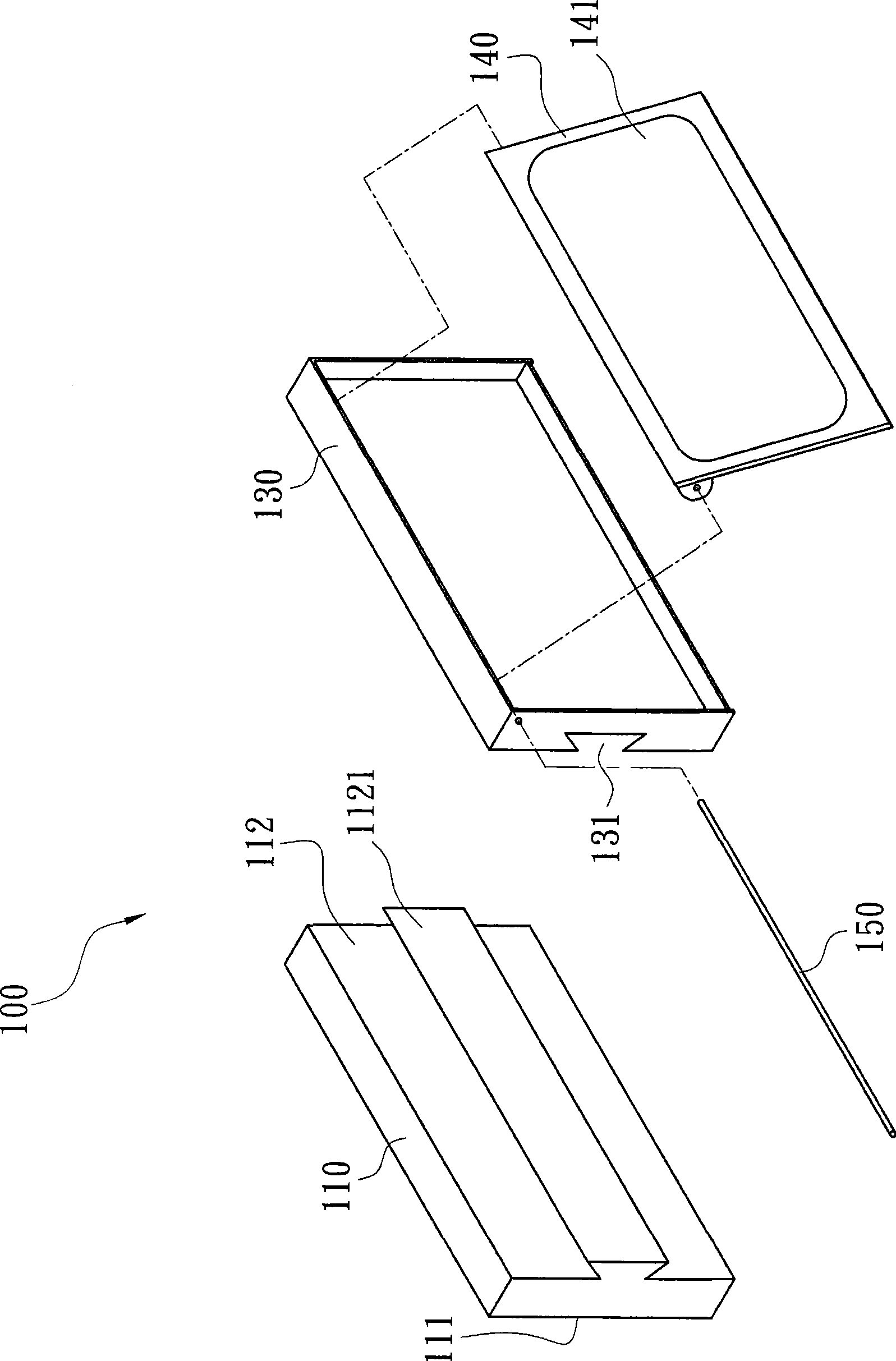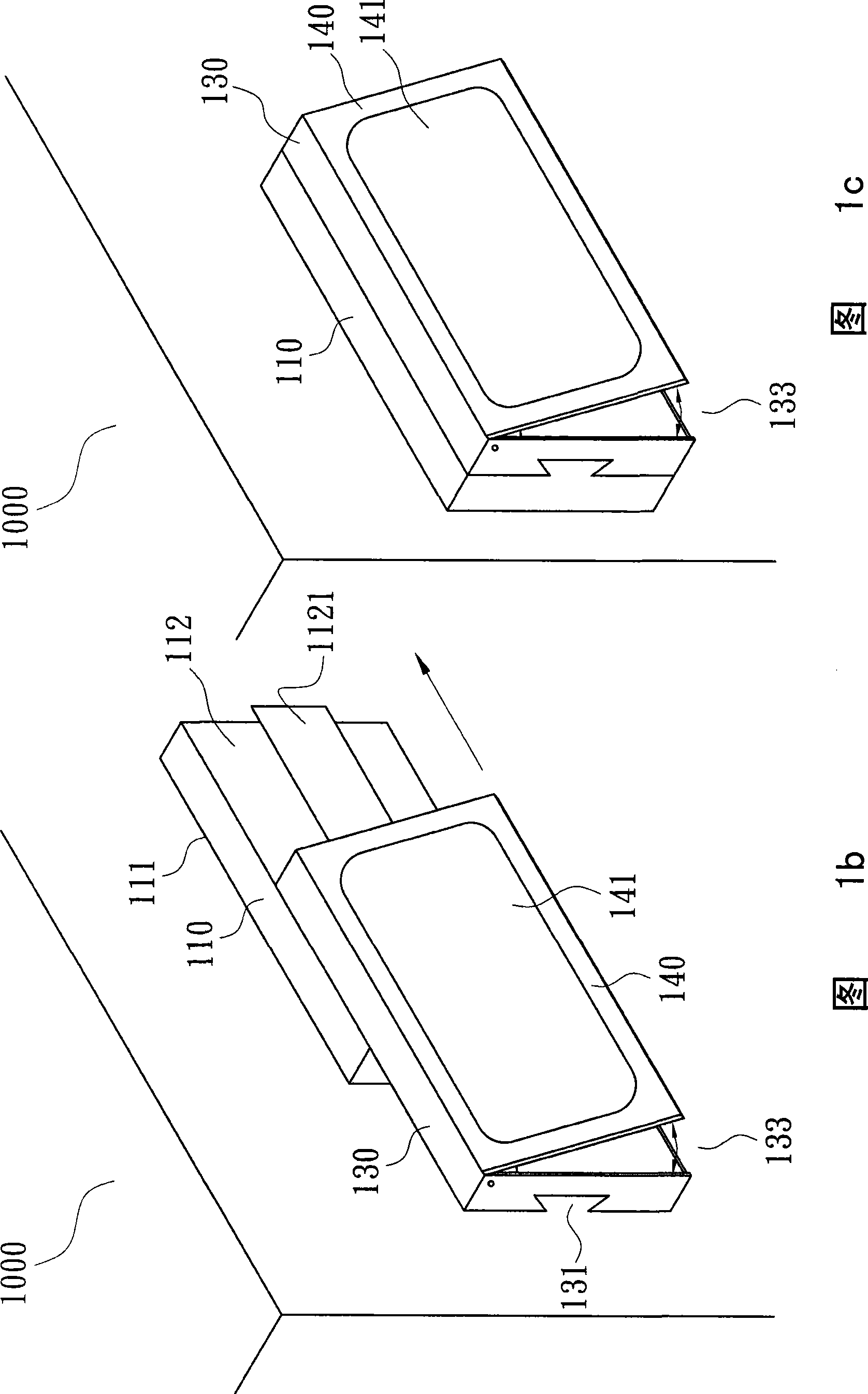Label base of wireless radio frequency identification label
An identification tag and radio frequency technology, applied in the field of the tag holder of the radio frequency identification tag, can solve the problems such as the inability to adjust the angle of the electronic tag and the inconvenience of users, and achieve the effect of reducing metal interference, increasing the effective distance and improving the reading quality.
- Summary
- Abstract
- Description
- Claims
- Application Information
AI Technical Summary
Problems solved by technology
Method used
Image
Examples
Embodiment Construction
[0042] Please refer to Figure 1a , which is an exploded perspective view of a tag holder of a radio frequency identification tag according to a preferred embodiment of the present invention. The label base 100 includes a base 110 , a top base 130 and a panel 140 . The base 110 has a first surface 111 and a second surface 112 , wherein the second surface 112 has a first fixing portion 1121 . The top base 130 has a second fixing portion 131 . The panel 140 can be provided with an electronic tag 141 , and has a structure with an adjustable angle relative to the top seat 130 , and can be adjusted according to the optimal angle required by the reader to read the electronic tag 141 . In this embodiment, the electronic tag is a radio frequency identification tag (RFID Tag), and the structure for adjusting the angle is to use a pivot 150 to install the panel 140 on the top seat 130 with proper tightness. , so that the adjusted angle of the panel 140 can be fixed.
[0043] Please r...
PUM
 Login to View More
Login to View More Abstract
Description
Claims
Application Information
 Login to View More
Login to View More - R&D
- Intellectual Property
- Life Sciences
- Materials
- Tech Scout
- Unparalleled Data Quality
- Higher Quality Content
- 60% Fewer Hallucinations
Browse by: Latest US Patents, China's latest patents, Technical Efficacy Thesaurus, Application Domain, Technology Topic, Popular Technical Reports.
© 2025 PatSnap. All rights reserved.Legal|Privacy policy|Modern Slavery Act Transparency Statement|Sitemap|About US| Contact US: help@patsnap.com



